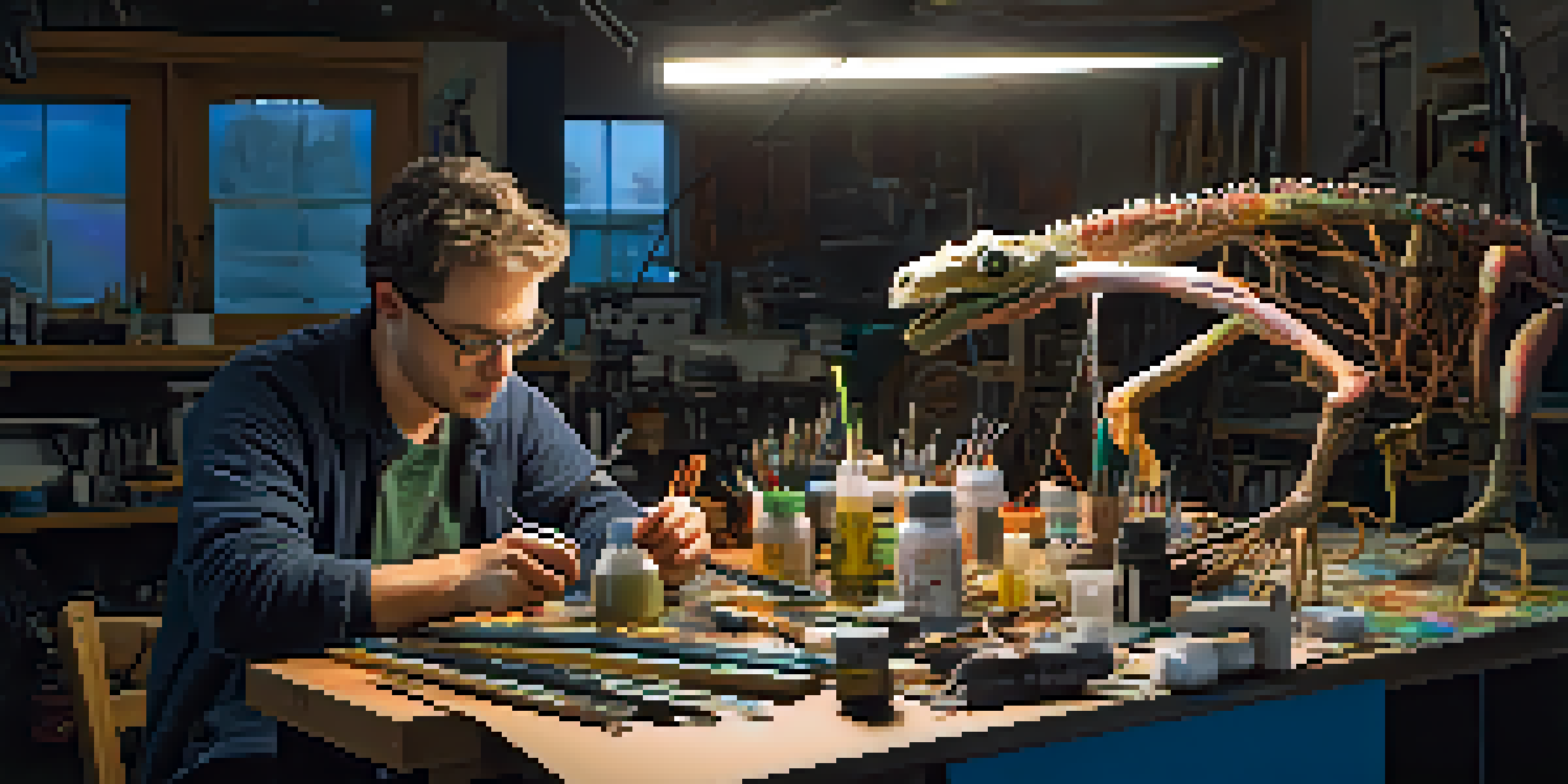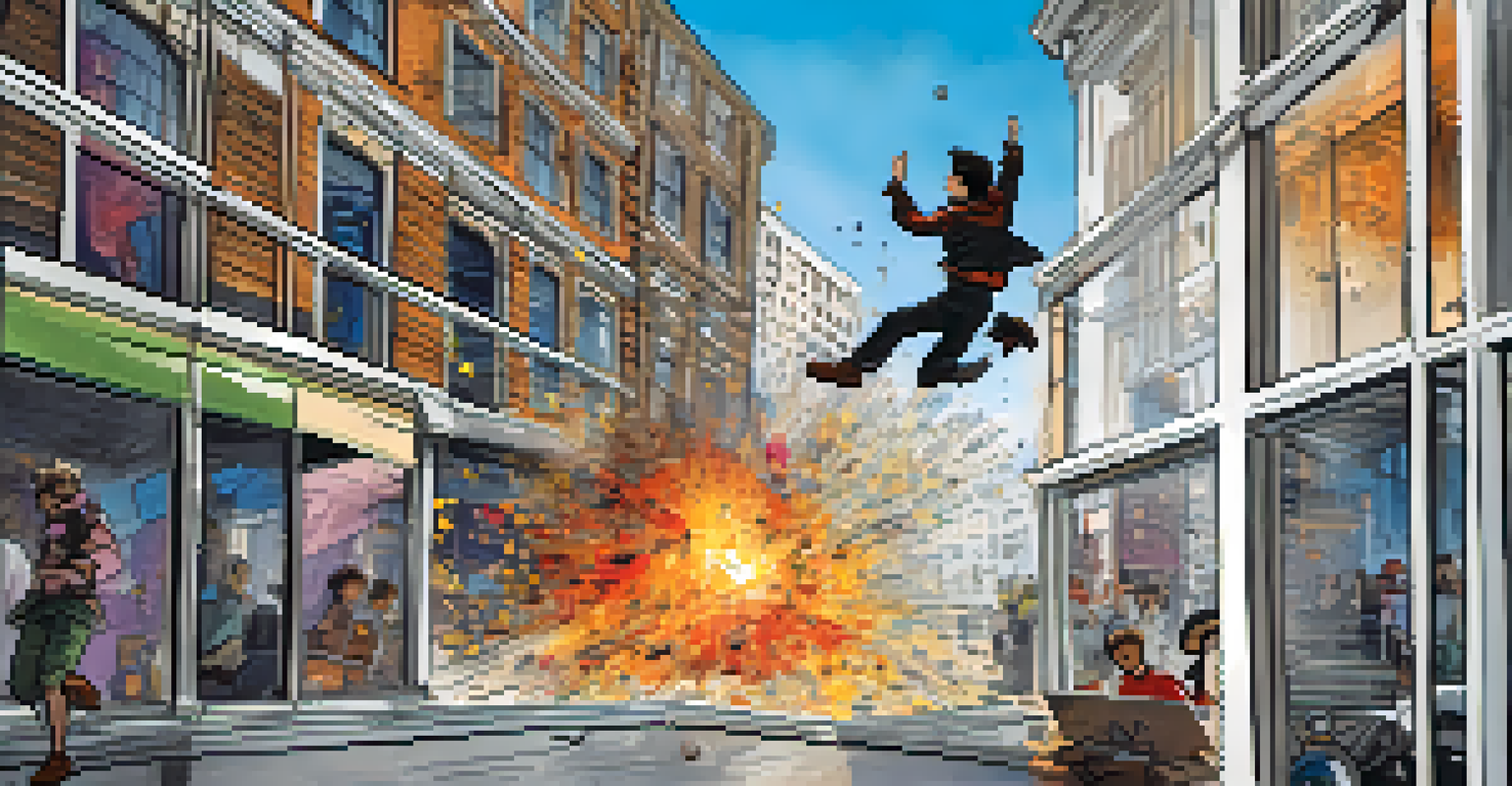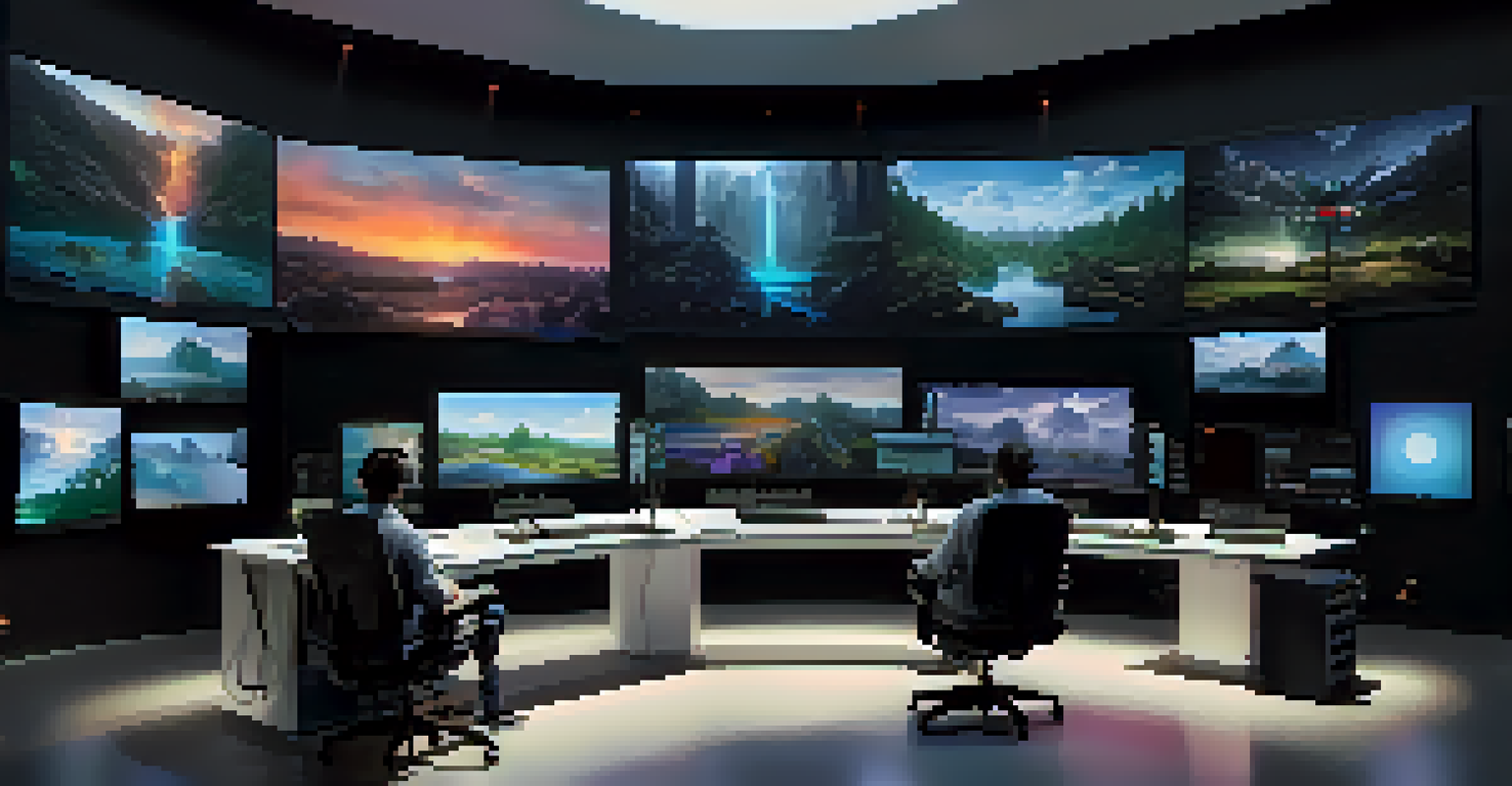Behind the Scenes: Creating Stunning Special Effects Magic

The Evolution of Special Effects in Film and TV
Special effects have come a long way since the early days of cinema. Initially, filmmakers relied on practical effects, like miniatures and camera tricks, to create illusions. As technology advanced, we began to see the rise of CGI, allowing for even more imaginative and intricate visuals.
Special effects are not just a way to create illusions, they’re a vital part of storytelling that enhances the viewer's experience.
Today, the blend of practical effects and digital enhancements creates a richer viewing experience. Directors can combine real-world elements with computer-generated imagery, producing scenes that feel both authentic and fantastical. This evolution has opened new doors for storytelling, enabling filmmakers to push the boundaries of creativity.
Take, for instance, the iconic scene in 'Jurassic Park' where the T-Rex roars for the first time. This moment was a masterclass in merging animatronics with digital effects, showcasing how far special effects have come and the magic they can bring to a story.
Understanding Practical Effects: The Real Deal
Practical effects are the backbone of many unforgettable movie moments. These tangible effects are created on set, using physical props, makeup, and mechanical devices to achieve a desired look. Think of the way a stunt double might leap off a building or how a creature is constructed from materials instead of pixels.

One of the most famous examples is the 'Alien' from Ridley Scott's classic film. The creature was brought to life through a combination of puppetry and costume effects, making it a terrifying presence on screen. The tactile nature of practical effects often lends a sense of realism that can be hard to replicate digitally.
Future Trends in Effects
Emerging technologies like AI and augmented reality are set to redefine special effects in filmmaking.
In many cases, practical effects are still favored for their ability to engage actors and immerse them in the scene. When an actor interacts with a real object or environment, it can enhance their performance and, ultimately, the audience's experience.
The Role of CGI in Modern Filmmaking
Computer-generated imagery, or CGI, has revolutionized how filmmakers tell stories. By creating lifelike visuals through software, directors can bring characters and worlds to life in ways that were once unimaginable. From the awe-inspiring landscapes of 'Avatar' to the magical creatures in 'Harry Potter', CGI has become an essential tool in the industry.
The best visual effects are the ones that you don’t notice, because they’re seamlessly integrated into the story.
However, CGI isn't just about creating fantastical elements; it can also enhance practical effects. For example, adding digital enhancements to explosions or weather effects can create a more dynamic scene. This synergy between practical and digital techniques can elevate a film's overall production value.
Despite its advantages, CGI comes with its own challenges. Striking a balance between realism and creativity is crucial, as overly reliant CGI can detract from the viewer's immersion. The goal is to use CGI to complement the narrative, not overpower it.
The Art of Storyboarding Special Effects
Before any special effect is created, it starts with a vision that comes to life through storyboarding. This process involves sketching out scenes to visualize how effects will fit into the narrative. Storyboarding helps filmmakers plan the logistics of shoots, including camera angles, timing, and the integration of effects.
For instance, in action-packed sequences, storyboards can illustrate how a character might jump through a window, followed by an explosion. This detailed preparation ensures that everyone on set understands their roles and the technical requirements needed to pull off the scene seamlessly.
Special Effects Evolution
The integration of practical effects and CGI has transformed storytelling in film and TV.
Effective storyboarding not only saves time and resources but also allows for creativity to flourish. It gives the director a chance to experiment with ideas before committing to the actual filming process, ensuring that the final product aligns with their vision.
Collaboration: The Heart of Special Effects Creation
Creating stunning special effects is rarely a solo endeavor; it thrives on collaboration. Teams of artists, technicians, and directors come together to create the magic we see onscreen. Each member brings unique skills and perspectives, contributing to the final product's richness.
For example, a visual effects supervisor works closely with the director to ensure that the effects align with the story's tone. Meanwhile, makeup artists and prop designers collaborate to create realistic elements that enhance the visual narrative. This teamwork is crucial in achieving a cohesive and believable final product.
Moreover, communication is key. Regular meetings, brainstorming sessions, and feedback loops help ensure that everyone is on the same page. This collaborative spirit often leads to innovative solutions and extraordinary creativity, resulting in breathtaking visuals.
Behind the Technology: Tools of the Trade
The world of special effects is heavily reliant on technology, with a variety of tools that artists and technicians use to bring their visions to life. Software like Adobe After Effects and Autodesk Maya allows for intricate visual manipulation, while tools like motion capture technology helps create lifelike movements for CGI characters.
For practical effects, craftsmen utilize techniques such as animatronics, puppetry, and physical props. These methods require a deep understanding of materials and mechanics, combining artistry with engineering. The craftsmanship behind these creations often goes unnoticed, but it plays a pivotal role in the film's authenticity.
Collaboration is Key
Creating stunning special effects relies on teamwork among artists, technicians, and directors.
As technology continues to advance, the possibilities for special effects seem limitless. With innovations like virtual reality and real-time rendering, filmmakers can explore new frontiers in storytelling, making the viewer’s experience even more immersive and engaging.
The Future of Special Effects: Trends to Watch
As we look toward the future, special effects are set to evolve even further. Emerging technologies such as artificial intelligence and augmented reality are beginning to influence how effects are created and integrated into films. These advancements will likely lead to more interactive and personalized viewing experiences.
Additionally, the growing popularity of streaming platforms means that filmmakers are exploring new formats, including short films and series that push the boundaries of conventional storytelling. This shift may lead to the development of new techniques and innovative ways to engage audiences.

Ultimately, the future of special effects will be defined by creativity and experimentation. As artists continue to push the envelope, we can anticipate breathtaking visuals that challenge our perceptions of reality and transport us to new worlds.